Peak height (grayscale values) for all plots of trimers from 8 dodecamers of SP-D. Mean peak height for the N term peak is something around 233nm +/18nm.

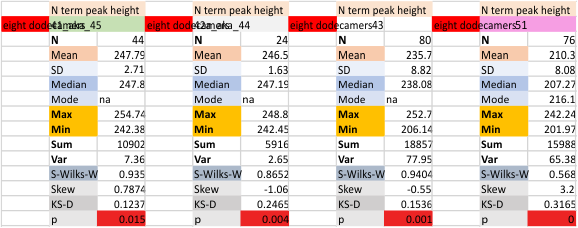
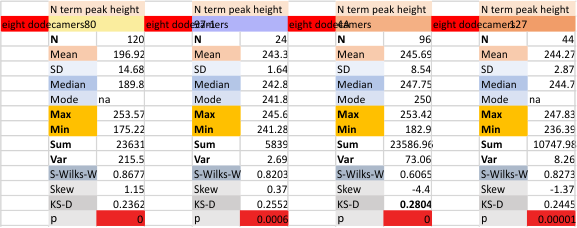
Lower images are peak valley (grayscale 0-255, values plotted in ImageJ)

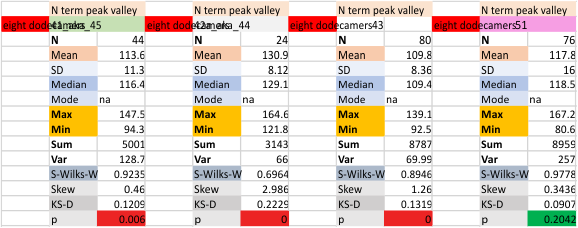
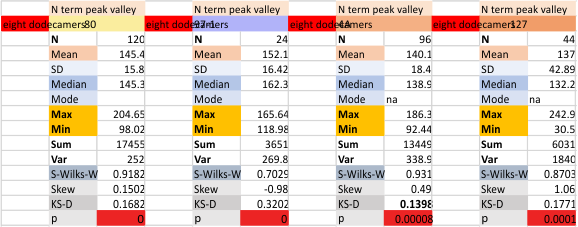
There is often a slight decrease in the N term peak, likely where the N term domains join the trimers at the center of the dodecamer. This is an infrequent event and its detection is also related to how one draws the plot line through the center of the image of the molecule. When the N term peak width is listed there are occasions when it interferes (reduces) the total N term peak width. The tiny change in grayscale (height and valley) of the N term peak is pretty small. I have put a ? in the title of this peak to denote its inconsistent appearance.
It is nevertheless listed here in a graphic and below, it appears in two of the eight trimers in these data.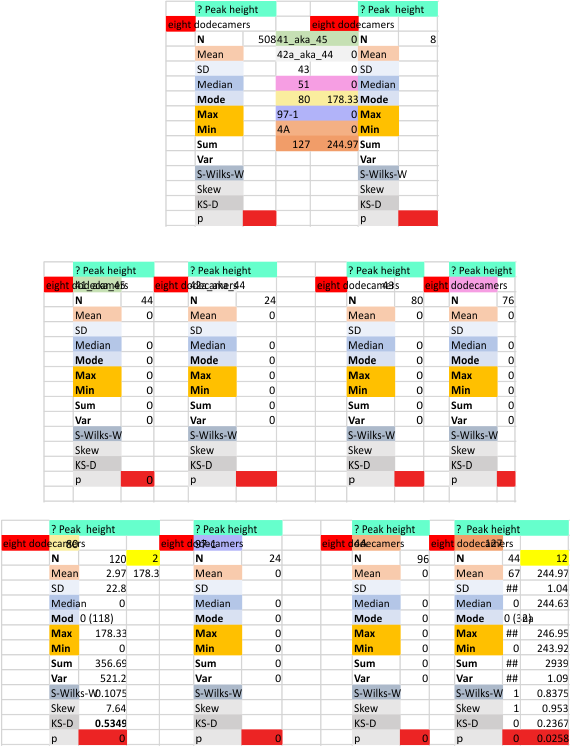
Same MO, but since this peak appears 100% of the time (so far) there is no second column where the mean (and other parameters) is calculated excluding the missing (undetected) peak values. Difference in CRD peak width is certainly not very different from the first 6 dodecamer summary than the first 8 dodecamer summary. Some benefit is gained by using the means of each, rather than the individual trimer values.
These data were derived using the not-detected peak values (listed as 0s) included in the whole sum, and also with the not-detected peak values. Those data without the missing values are indicated with a “yellow” color in the cell.
I am actually glad that the data dont change much regardless of whether it includes the 6 dodecamers, or the 8 dodecamers, or the missing values, clearly the data are pretty stable.
Images below (top two image are the summary of all the trimers counted (six, and eight trimers). Peak 5, (color has been pink in every post for the last two years) is a thin and low peak which is present in Values include each trimer plot as well as the dodecamers as single entities (n=6 and n=8). 72.5 (six dodecamers) and 74.4 % (eight dodecamers) of the time, peak 5 is detectable. A nice round number for the width of peak 5 is 5nm.
Each dodecamer is treated separately and data are listed below the summary tables.
as before, mean is in nm as determined from the micron bar in each image. So the glycosylation peak seems to be just about 18 nm in width, as shown by measurements on the first 8 dodecamers (AFM images plotted in IMAGEJ, with images subjected to many different filters, and plots subjected to many different peak finding programs.
In this assessment of N term peak width, two new sets of measurements have been added. The caveat here is that both the image I have labeled 4A (supplement figure 4, image A from Arroyo et al) is also the image that I have named 127 (from the body of the paper, thus a different resolution, different bar marker, different ppi, and different contrast and HSL, image processing filters, (but NOT different peak finding apps). These are sort of used to compare differences between random image factors (you can make your own comparison just by looking at the statistics for 4A and 127 in the figures below). A two-tailed t-test determines: The t-value is 6.57159. The p-value is < .00001. The result is significant at p < .05 between the two sets of data. They are not out of line with means for N term width for other N termini peaks.
Means for the N termini peak of n=six dodecamers, and n=8 dodecamers is the top figure. And individual dodecamers are listed in the two figures below (by the names I have given them, and also color coded).